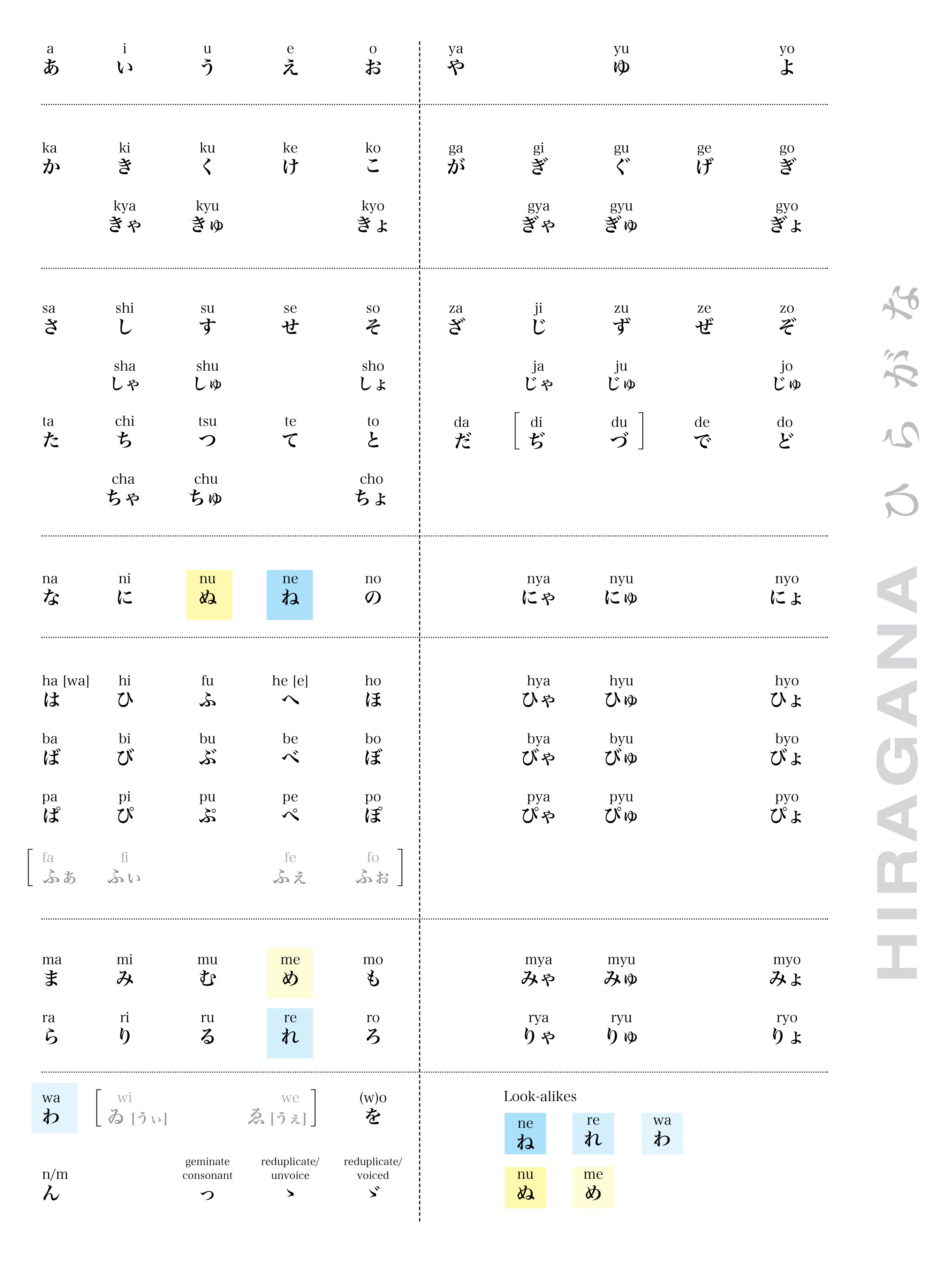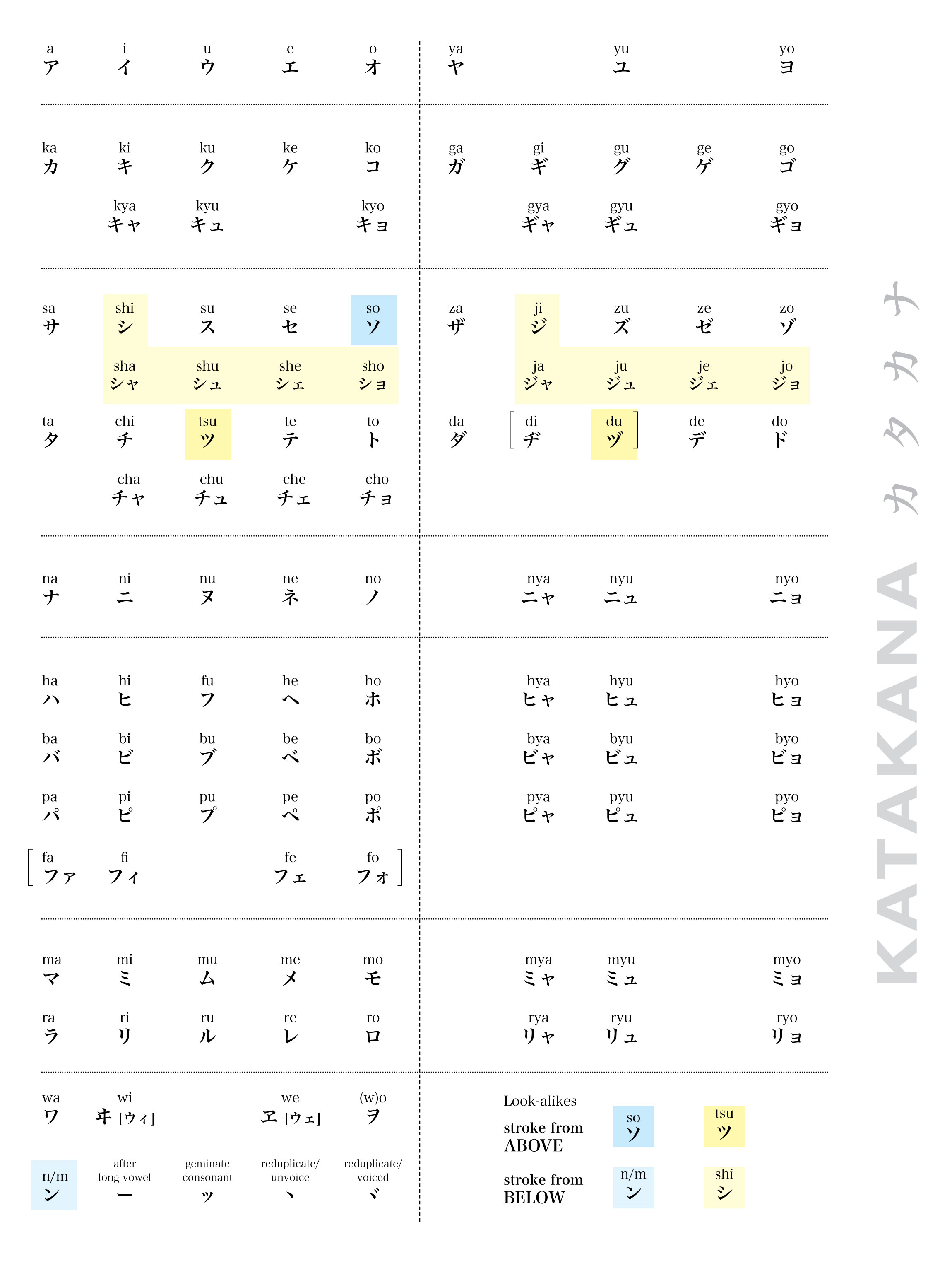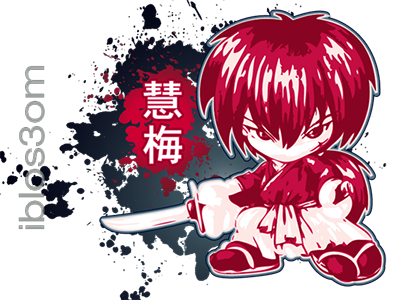
The Japanese writing system consists of Hiragana (平仮名 | ひらがな) + Katakana (片仮名 | カタカナ) + Kanji (漢字 Chinese characters) [+ some instances of roman-ji].
Hiragana and katakana are both kana systems. They have corresponding character sets in which each kana or character represents one mora (one sound in the Japanese language). Each kana is either a vowel such as “a” (hiragana あ OR katakana ア); a consonant followed by a vowel such as “ka” (hiragana か OR katakana カ); or “n” (hiragana ん OR katakana ン), a nasal sonorant which, depending on the context, sounds either like English m, n, or ng, or like the nasal vowels of French. Because the characters of the kana do not represent single consonants (except in the case of ん / ン “n”), the kana are referred to as syllabaries and not alphabets.
Hiragana is used to write native words for which there are no kanji, including grammatical particles such as から kara “from”, and suffixes such as さん ~san “Mr., Mrs., Miss, Ms.” It is also used to write words whose kanji form is obscure, or too formal for the writing purpose. (Sometimes, writers will also use hiragana to represent a word instead of kanji). Verb and adjective inflections, for example tabemashita (食べました: ate), are written in hiragana, often following a verb or adjective root 食 that is written in kanji. When Hiragana is used to show the pronunciation of kanji characters as reading aid, it is referred to as furigana.
In contrast to hiragana, the katakana syllabary usage is quite similar to italics in English. It is specifically used for transcription of foreign language words into Japanese and the writing of loan words (collectively gairaigo), for emphasis, to represent onomatopoeia, for technical and scientific terms, and for names of plants, animals, minerals, and often Japanese companies.
The modern hiragana syllabary consists of 46 characters; beginning with 5 singular vowels a, i, u, e, o and by adding 9 consonants k, s, t, d, n, h, m, r, w. While the katakana script consists of 48 characters with similar vowels and consonants as hiragana.
These basic characters can be modified in various ways. By adding a dakuten marker ( ゛), a voiceless consonant is turned into a voiced consonant: k→g, ts/s→z, t→d, h→b and ch/sh→j. Hiragana/Katakana beginning with an h can also add a handakuten marker ( ゜) changing the h to a p.
A small version of the hiragana/katakana for ya, yu or yo (ゃ, ゅ or ょ / ャ, ュ or ョ respectively) may be added to hiragana/katakana ending in i. This changes the i vowel sound to a glide (palatalization) to a, u or o. Addition of the small y kana is called yōon. For example, き / キ (ki) plus ゃ / ャ (small ya) becomes きゃ / キャ (kya).
The character sokuon, characterized by a small tsu っ OR ッ, indicates the doubling of a consonant called gemination. For example, compare さか / サカ saka “hill” with さっか / サッカ sakka “author”. In Hiragana, it also sometimes appears at the end of utterances, where it denotes a glottal stop, as in いてっ! (itte: Ouch!). In Katakana, geminated consonants are common in transliterations of foreign loanwords; for example “bed” is represented as ベッド beddo. However, geminated consonants cannot be used to double the na, ni, nu, ne, no syllables’ consonants – to double them, the singular n (ん / ン) is added in front of the syllable.
Hiragana usually spells long vowels with the addition of a second vowel kana. The chōonpu (long vowel mark) (ー) used in katakana is rarely used with hiragana, for example in the word らーめん, rāmen is considered non-standard 「ラーメン in katakana is standard」. In informal writing, small versions of the five vowel kana are sometimes used to represent trailing off sounds (はぁ / ハァ haa, ねぇ / ネェ nee). Standard and voiced iteration marks are written as hiragana ゝ OR katakana ヽ (reduplicates and unvoices syllable) and hiragana ゞ OR katakana ヾ (reduplicates and voices syllable).
– source Wikipedia


